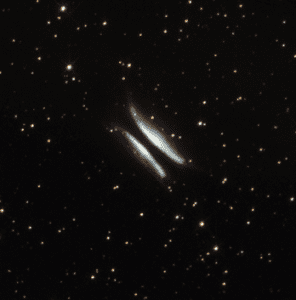TAG: GS 3: SCIENCE AND TECHNOLOGY
THE CONTEXT: NASA has released a stunning image captured by the Hubble Space Telescope of a cosmic object nicknamed Gomez’s Hamburger.
EXPLANATION:
- This object, located approximately 6,500 light-years away in the constellation Sagittarius, showcases the spectacular and whimsical phenomena found in the universe.
Gomez’s Hamburger
- Gomez’s Hamburger is a cosmic structure formed by a dying star.
- The image reveals features reminiscent of a hamburger, with the “buns” created by light reflecting off surrounding dust.
- The “patty” represented by a dark band of dust concealing the central star.
- This vivid imagery not only highlights the intricate beauty of celestial objects but also serves as a fascinating metaphor for complex astronomical phenomena.
- According to NASA, Gomez’s Hamburger was created as a dying Sun-like star cast off its outer layers of material.
- The object’s appearance is characterized by dust and light; the light reflecting off the dust forms the bright “buns,” while the dark central band of dust acts as the “patty.”
- This band of dust obscures the view of the star itself, giving the object its hamburger-like shape.
- The formation of such structures provides insight into the lifecycle of stars and the processes involved in stellar evolution.
- The release of the image of Gomez’s Hamburger garnered significant attention and enthusiasm from the public.
- Internet users were quick to comment on the image, with many expressing amazement and amusement at the cosmic burger’s appearance.
- This public engagement underscores the power of visual astronomy to capture the imagination and foster interest in space science.
 Gomez’s Hamburger
Gomez’s Hamburger
Alternative Theories
- While NASA’s explanation attributes Gomez’s Hamburger to a dying star, some users have suggested alternative theories.
- One notable suggestion is that the object might be formed by the protoplanetary disk surrounding a new star, rather than the remnants of a dying one.
- This hypothesis, while not the prevailing scientific consensus, highlights the ongoing discussions and curiosity sparked by such astronomical discoveries.
Hubble Space Telescope
- The Hubble Space Telescope, launched in 1990, has significantly advanced our understanding of the universe.
- Its contributions range from determining the atmospheric composition of exoplanets to discovering dark energy.
- The telescope continues to provide valuable data and stunning images, such as that of Gomez’s Hamburger, that enhance our knowledge of cosmic phenomena and inspire public interest.
NASA’s PREFIRE Mission
- In addition to the Gomez’s Hamburger revelation, NASA announced the launch of the first of two climate satellites as part of the PREFIRE (Polar Radiant Energy in the Far-InfraRed Experiment) mission on May 26.
- These CubeSats are designed to study heat emissions at Earth’s poles.
- By measuring the amount of heat Earth radiates into space from these cold, remote regions, PREFIRE aims to improve the accuracy of predictions regarding changes in Earth’s ice, seas, and weather patterns in a warming climate.
- This mission reflects NASA’s broader commitment to understanding and mitigating the impacts of climate change.

